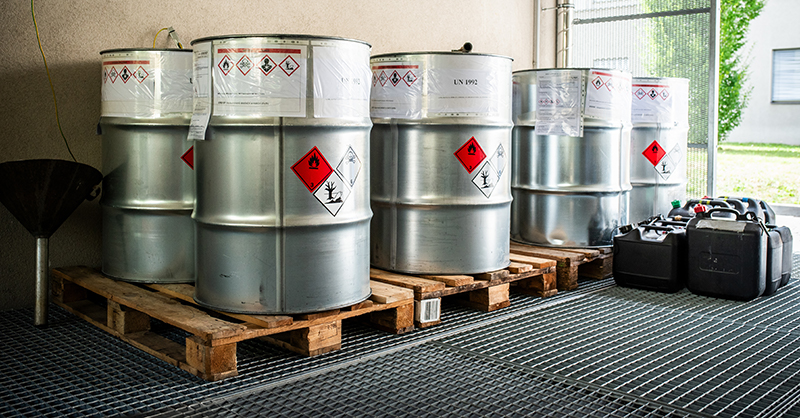Help Your School Bus Passengers Stay Safe

As a school bus driver, you should make sure that students behave well to avoid becoming distracted while driving.
Distracted driving can seriously impair a driver’s ability to control the bus, putting everyone on board at risk. The following examples show how bus drivers can help maintain an acceptable level of behavior:
General Attitude
Set a good example and convey to the students that you are a responsible person who follows rules. Be friendly and help protect the entire group by establishing your expectations and rules as soon as students board the bus. If needed, provide an explanation for students to help complete a job or follow a rule; and be consistent in rule setting, treating all students equally. You should also provide positive reinforcements for students when they behave well.
Discipline
Behavioral boundaries are important to establish for everyone’s safety. When enforcing boundaries for appropriate behavior, it is important not to put yourself in a position to argue with the student. In addition, you should not let the situation get out of hand and when necessary, you should quickly get help from additional administrators.
When There is a Problem
If an issue arises, stop the bus when it is safe to do so, either in a parking lot or driveway. Secure the bus and take the ignition key with you to prevent unauthorized use. Stand up, face the students, and clearly communicate expectations and consequences for the situation. If the offense is preventing you from driving safely, contact a school administrator and follow your district procedures for further action.
School Bus Loading and Unloading
According to the National Highway Traffic Safety Administration, in every crash involving a child being struck by a school bus, driver error was indicated when the driver “lost” sight of the child during loading or unloading. If the driver had maintained a line of sight, the student would not have been struck. Drivers should consider the following to ensure safe loading and unloading of the school bus:
- Before you start the trip, inspect the bus to make sure there are no problems with the equipment. Make sure that the mirrors are properly adjusted so you can see what you are supposed to see.
- Loading and unloading requires full concentration. If you are running late on a route, do not rush. Check all mirrors slowly and carefully, especially as you move away from a stop.
- Stay to the right side of the roadway when loading and unloading. Do not try to block traffic. Stay in the traffic lane, not on the shoulder (unless your state/local laws or procedures say differently). Stop before you get to the students. Make them walk to you so you can see them.
- Secure your bus whenever you load or unload. Set the emergency brake and put the bus in neutral. Ensure that all safety devices have been activated.
- Avoid situations in which backing up is required. If you must, back up near a bus stop. Open your window and sound your horn. Back up slowly. Do not allow students to unload until you are finished backing.
- Use a hand signal or head nod to tell the students when it is safe to cross the street. The hand signal should not be confused with a wave because waiting motorists might think you are telling them to pass. Use the external public address system if you have one. Teach the students what horn signal you will use to signal danger. The signal will mean to “return to the side of the road they started from — AT ONCE!”
- Know how many students should get on the bus at each stop and count them. If any are missing, ask if they were at the bus stop. If yes, secure the bus, and check around and underneath the bus.
- As the students get off at a bus stop, count them. Then, before you move the bus, count them again as they move away. Do not move until you are sure that they are all away from the bus. If you cannot account for a student outside the bus, secure the bus and check around and underneath the bus.
- Watch for students running late or students running for a missed bus. Check the bus at the end of a run to ensure no students fell asleep on the bus. If a student drops something outside the bus, make sure they tell you and follow your instructions for retrieving the item. Clothing, drawstrings, and straps can catch in handrails, doors, the step outside the door, fire extinguishers, and other unexpected locations. Make sure that all children are clear of the bus before moving off.
Schools – A Guide to Hiring Charter Transportation
Some schools elect to hire charter transportation for events including field trips, recreational outings, athletic events, or other activities. Reduce the risk to students through careful selection of the transportation company.
How safe is the bus company?
Before hiring a safe bus company, you need to have sufficient information on the company. It is important to know if the drivers are qualified and drug/alcohol-free. You also need to know if the buses have been properly maintained and are in good operating condition. Ask questions about safety, and make sure that any company you choose is willing to answer these 10 important questions:
- Does each driver have a current Commercial Driver’s License with a “passenger” endorsement?
- Does the company require that its drivers take physical examinations?
- Does the company have a drug and alcohol testing program for drivers?
- Does the company consider driver fatigue in assigning work schedules?
- Will the driver be able to complete the planned trip within the legal limit of driving hours? If not, will a second driver or overnight rest stop be necessary to perform the trip legally?
- Are the buses inspected annually? By whom?
- Does the bus company have the required public liability insurance?
- What procedures exist for roadside emergencies and breakdowns?
- What is the company’s accident history?
- Does the bus company subcontract for equipment and/or drivers? If so, they should provide you with the name of the second bus company so you can check its background as well.
To help ensure that the company you are selecting is qualified, you may need to enlist the help of someone who understands the answers. Whether you rely on an existing vendor or choose a new charter transportation company, you should always make sure that their safety record is satisfactory. The U.S. Department of Transportation keeps records on every bus company that operates in more than one state. To access this information, all you need is the company’s U.S. DOT number.
Using the FMCSA “Company or USDOT Lookup”, you will find an up-to-date history on the company including:
- Whether the company has authority to transport passengers in interstate commerce;
- The company’s accident history, safety rating and insurance status;
- The company’s performance during roadside inspections; and
- Whether the company has been examined by law enforcement or a regulatory professional.
It is also important to understand that there are many federal regulations in place for interstate operators and how those states apply similar regulations for their intrastate operators. This could range from the number of hours a driver can operate a bus to medical standards that bus drivers should follow. If you experience an unsafe trip in which students are injured or, you believe, endangered by the actions of the bus company, call 1-888-DOT-SAFT (1-888-368-7238).
Resources













